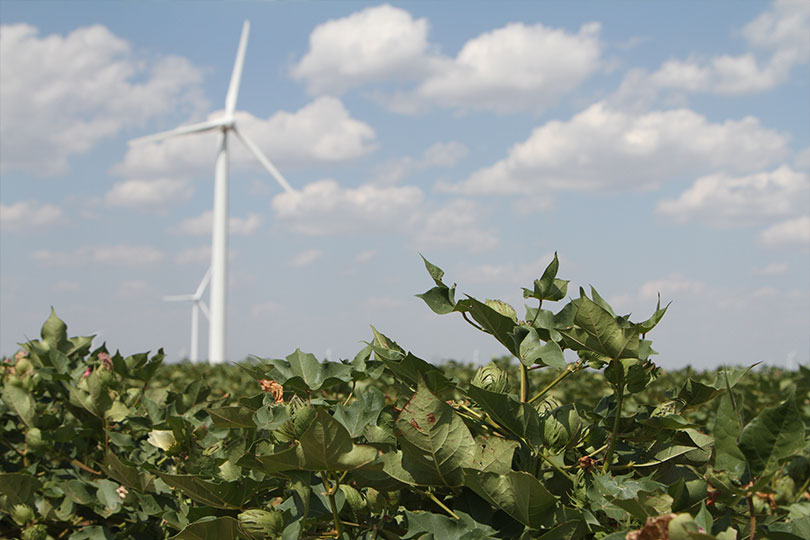By Shelby Shank
Field Editor
Texas cotton farmers are facing a summer of uncertainty and could expect volatile prices, according to an AgriLife Extension economist.
Cotton planting began in February and March in South Texas and ended mid-June in the Panhandle. Drought left many farmers without hope for this year’s crop, and Dr. John Robinson, AgriLife Extension cotton economist, noted early U.S. Department of Agriculture (USDA) planting estimates are in shambles after spring rainfalls.
Consistent rains in May prevented many cotton farmers in the South Plains and Panhandle from planting. Some young plants were drowned out by excessive rain, while others never emerged as the topsoil crusted over in the sun and heat. These issued were followed by severe storms that brought flooding and widespread hail damage.
Robinson noted half to three-quarters of intended cotton acres in the Panhandle may not be harvested.
“The weather has been strange, and how to aggregate the multiple factors that have created so many wrinkles of uncertainty is beyond me,” Robinson said. “Last year, it was drought, and we had a pretty good idea it was going to be bad, and the market could digest that information, but this is the most uncertain season I can remember.”
USDA estimated U.S. cotton acres to produce 16.5 million bales, based on prospective planting surveys earlier this year. As the nation’s top cotton-producing state, Texas produces nearly 55% of national cotton production acres and half of the U.S. crop in a good year.
“It’s always challenging to forecast production at the state level because Texas is so big, but this year is the absolute most uncertain because of the extremes the potential crop has been through,” Robinson said. “The USDA has probably not accounted for what has been lost. How big is the Texas crop? I have no clue.”
Robinson said there is less uncertainty about cotton crops outside Texas other than delayed plantings along the Mississippi Delta due to wetness. Other analysts believe actual planted acres may be lower than prospective planting estimates due to historically high corn prices.
Uncertainty could lead to volatile cotton prices until September when USDA will have survey data from certified acres. Robinson noted uncertainty can drive price speculation but will likely trigger roller coaster prices throughout the season.
“Cotton prices have been below 80 cents per pound, and I would think this type of change would mark an increase in prices,” Robinson said. “I wouldn’t be surprised to see cotton over 90 cents, but I would be surprised if it stayed there. I don’t expect prices will be stable with this much uncertainty.”
Last year, three out of four cotton acres in Texas were not harvested, Robinson said. The market reached $1.50 per pound in May and June before falling 50 cents and then rising again to around $1.15 per pound by late summer. When the 2022 crop production was clearer, prices settled down in the 80-cent per pound range.
“The uncertainty of the cotton crop is also concerning for rural communities across the state as it is more than farmers who depend on the crop,” Brant Wilbourn, Texas Farm Bureau associate director of Commodity and Regulatory activities said. “Last year was hard with a reduced crop and another short crop could be devastating.”


Same thing happening in eastern North Carolina Cotton in full bloom and no rain in sight for the next 10 days